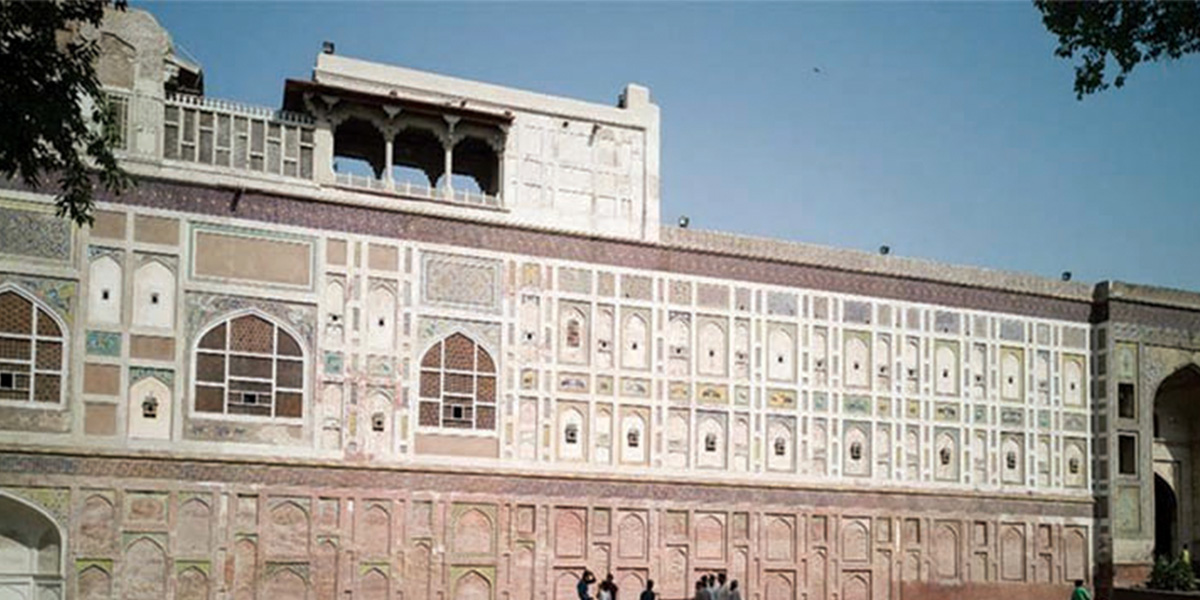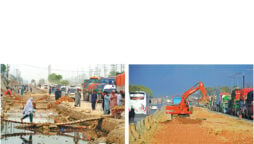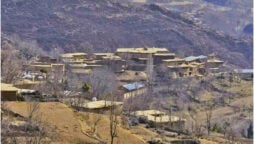Synopsis
There are six UNESCO world heritage sites in Pakistan out of which three of them are in Punjab

There are six UNESCO world heritage sites in Pakistan out of which three of them are in Punjab. These renowned heritage sites are known as Lahore Fort (beside Shalimar Garden and combined as one unit) Rohtas Fort and Taxila monuments.
Moreover, there are 11 tentative UNESCO world heritage sites present across the province.
Punjab Archaeology Department director Maqsood Ahmad Malik spoke to Bol News about the conservation process that has been carried out by the department. He also shared the statistics of the monuments that have been restored. According to the archaeology director, 11 ADP schemes for the preservation, restoration and development of archaeological monuments of the province have been completed in 2020-2021.

These included development and restoration of archaeological sites from Taxila, improvement and upgradation of Taxila Museum, conservation of Bahadur Khan’s Tomb Lahore, conservation of historical monuments near metro train orange line track Lahore, preservation and restoration of Tomb of Nadira Begum, development of approach road bridge and provision of overhead water tank Hiran Minar district Sheikhupura, archaeological excavations and preservation of Mound Dillu Roy near Jampur district Dera Ghazi Khan, research and promotion documentaries of Punjab heritage, conservation and restoration of shrine of Shah Hussain Saddo Zai at Multan and conservation of the Tomb Abu Hanifa at Uch Sharif District Bahawalpur besides preservation and restoration of Suri Mosque, Bhera, Sargodha.
The study of ancient and recent past through material remains and structures is known as archaeology.

The discipline of archaeology dispenses a wide range of opportunities to learn and understand about past culture and lifestyle of the past people through the study of structures, artefacts, human and animal remains. Excavation and study of artifacts of the historic past gives an important in-depth knowledge and insight about the life of people living before us, especially in the case in which no written material is available or deciphered.

Pakistan is a country home to many important ancient civilisations beside historic, cultural and religious edifices of the recent past built by different dynasties over the course of time. A large number of prehistoric and historic sites with unique characteristics are found in different parts and areas of the country. To regulate these and protect these important historic sites, all provinces have provincial archaeology departments after the introduction of the 18th amendment.
Punjab also possesses many potent sites of ancient and recent past. The province’s department of archaeology carries an important responsibility to protect and preserve these historic sites from desolation by systematically safeguarding and appropriately illuminating the historic past of Punjab.

This week, Bol News reached out to Punjab Archaeology Director Maqsood Ahmad Malik to learn what measures and procedures are being followed and practiced for protection and conservation of these historic sites in Punjab. Emphasising on the importance of archaeology, Malik said, “Archaeology guides us with the opportunity to learn about past structures, history, architecture and cultures through the study of artefacts, animal bones and sometimes human bones. Examining these artefacts helps to provide us with some insight and knowledge about what the lifestyle of prehistoric and historic people was like, especially who left behind no written record.”
He added, “It is very important for any country to learn about the past achievements of the people living way before us. Examining these historic artefacts in detail can help us to achieve more development by learning from the architectural experience of the past people. Archaeology helps us understand not only where and when people lived on the earth, but also why and how they have lived, examining the changes and causes of changes that have occurred in human cultures over time, seeking patterns and explanations of patterns to explain everything from how and when people first came to earth.”

The archaeology director maintained, “Unlike history, which relies primarily upon written records and documents to interpret great lives and events, archaeology allows us to delve far back into the time before written languages existed and to glimpse the lives of everyday people through analysis of things they made and left behind.”
Archaeology is the only field of study that covers all time periods and all geographic regions inhabited by humans, he explained. “It has helped us to understand major topics like ancient Egyptian religion, the origins of agriculture in the Near East, colonial life in Jamestown Virginia, the lives of enslaved Africans in North America, and early Mediterranean trade routes. In addition to this, archaeology today can teach us about the lives of individuals, families and communities that might otherwise remain invisible.”

Malik, while speaking about the tourism aspect of archaeology, commented that archaeological and historical tourism combines a passion for the past with a sense of adventure, discovery and heritage. “People are fascinated with ancient and historical remains. Archaeological and historical tourism lets tourists experience the past and allows them to share the excitement of discovery. The imperfections of an old building are something that tourists are attracted to, including the varying levels throughout the building, the internal furnishing, etc. The oddities that historical buildings provide cannot be found anywhere else in society, so it is vital to keep them protected.”
He further said that cultural heritage tourism is important for various reasons. “It has a positive economic and social impact, it establishes and reinforces identity. Moreover, it helps preserve the cultural heritage, with culture as an instrument, it facilitates harmony and understanding among people. In addition to this, it supports culture and helps to boost tourism in Pakistan, which will eventually bring in more foreign revenue into the country.”

Regarding the functioning and procedures followed by the Department of Archaeology Punjab for protection and conservation of historic sites, Malik told Bol News that after the 18th amendment, 151 historical sites were given to Punjab. “But at present, we are dealing with approximately 415 historic sites in total. The utmost duty of the Punjab Archaeology Department is to explore, protect and conserve these important historical monuments all over the region. This year, our total budget is Rs700 million which will be used to protect and restore the desolated monuments all over Punjab.”
He elaborated that the provincial archaeology department is a multidisciplinary authority which consists of teams of professional archeologists, historians, technical assistance, conservation engineers, architects and chemists. “Heritage monuments are restored in the light of suggestions and prescription of these mentioned experts. On different occasions, we collaborate and provide assistance to other various departments such as Auqaf Punjab, Hindu Evacuee Trust Property Board, private, traditional and international organisations for the conservation of important heritage sites of archaeological significance.”

Malik spoke about the new initiatives that are being taken up by the department recently. “We are ensuring provision of missing public facilities (benches, dustbins and drinking water) at most visited monuments/sites. We are also preparing the business plan of heritage site in collaboration with TDCP and the opening of a photographic gallery at Moorcroft building Shalimar Garden besides opening of a photographic gallery at Jahangir’s tomb, Shahdara. Then there is the opening of the tourist information centre (TIC) in Jahangir Tomb and Shalimar Garden in collaboration with the TDCP in the pipeline.”
Moreover, there is also preparation of a master plan of archaeological sites, the director claimed.

He spoke about the new law known as Punjab Museum Board Ordinance, 2021 for ‘efficient maintenance and management of museums’ in Punjab. “This law has been introduced to give more strength and access to the provincial archaeology department. Our mission is to preserve and protect the built heritage and archaeological sites for our future generations. For this purpose, we are continuously preserving the heritage sites as per our resources. Besides, we are establishing new museums for the people and future generations so that they get a glimpse of our past heritage.” Significant amount of work has been done so far in this regard, he also claimed. “The Directorate General of Archaeology, Tourism Department initiated the establishment of new museums for provision of better facilities and education as well as to create awareness about our archaeological assets and promotion of tourism.”

These included Archaeological and Cultural Museum at Multan, Archaeological Museum at Harappa as well as the Ram Pyari Mahal, Gujrat, and Kallar Kahar museums.
The Directorate General of Archaeology, Punjab is also focusing on promotion of heritage sites through social and electronic media. Brochures, documentaries, information and all other relevant activities are being uploaded on social media platforms for information purposes.
Catch all the Breaking News Event and Latest News Updates on The BOL News
Download The BOL News App to get the Daily News Update & Live News.












 Read the complete story text.
Read the complete story text. Listen to audio of the story.
Listen to audio of the story.